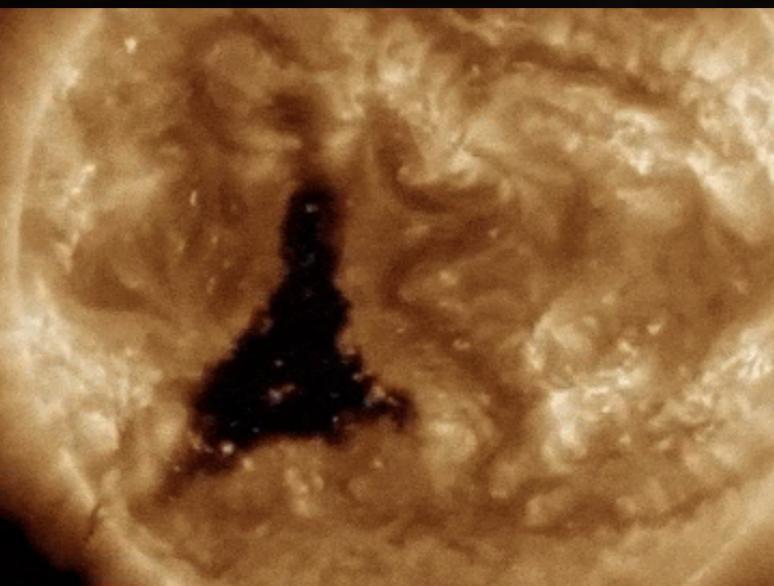
1,40,000-km wide sunspot appears on Sun
The Sun, the star at the center of our solar system, has been a topic of fascination for scientists and astronomers for centuries. It’s often referred to as the “perfect star” due to its incredible size and energy output. But despite its seemingly calm appearance, the Sun is constantly dynamic, with magnetic fields and hot plasma constantly moving and interacting.
Recently, a significant event has taken place on the Sun, which has caught the attention of astronomers and space enthusiasts alike. A massive sunspot, approximately 1,40,000 kilometers wide, has appeared on the surface of the Sun. This sunspot, known as AR 4079, is the largest one to be spotted this year so far.
To put its size into perspective, AR 4079 covers an area equal to 50% of Carrington’s sunspot in 1859. That’s a significant size, and it’s no wonder that scientists are excited to study this phenomenon.
So, what is a sunspot, and why are they important?
What are sunspots?
Sunspots are the visible component of active regions, areas of intense and complex magnetic fields on the Sun. These magnetic fields are so strong that they can heat up the surrounding plasma, causing it to rise and creating a cooler region on the surface of the Sun. This cooler region appears as a dark spot, giving sunspots their characteristic dark color.
Sunspots are not just interesting to look at; they’re also crucial for understanding the Sun’s internal dynamics. They’re the source of solar eruptions, such as solar flares and coronal mass ejections (CMEs). These eruptions can affect the Earth’s magnetic field, causing geomagnetic storms, aurorae, and even disrupting communication and navigation systems.
The significance of AR 4079
The appearance of AR 4079 is significant for several reasons. Firstly, its massive size means that it could be a major player in the Sun’s internal dynamics. As a result, scientists are eager to study its behavior and see how it will interact with other sunspots and magnetic fields on the Sun.
Secondly, AR 4079 is a harbinger of solar activity. As a massive sunspot, it’s likely that it will produce significant solar flares and CMEs, which could affect the Earth’s magnetic field. This could lead to spectacular aurorae displays at higher latitudes, as well as disruptions to communication and navigation systems.
Finally, AR 4079 provides scientists with an opportunity to study the Sun’s internal dynamics in greater detail. By analyzing its behavior, scientists can gain a better understanding of the complex magnetic fields that drive the Sun’s activity.
What does the future hold?
As AR 4079 continues to evolve and interact with other sunspots and magnetic fields on the Sun, scientists will be closely monitoring its behavior. They’ll be using a range of instruments, from ground-based telescopes to spacecraft, to study its behavior and predict its impact on the Earth.
While it’s difficult to predict exactly what will happen, scientists are expecting AR 4079 to be a significant player in the Sun’s activity over the coming weeks. They’ll be watching closely to see if it produces any major solar flares or CMEs, and how these events will affect the Earth’s magnetic field.
In conclusion, the appearance of AR 4079 is a significant event that provides scientists with an opportunity to study the Sun’s internal dynamics in greater detail. As a massive sunspot, it’s likely to produce significant solar flares and CMEs, which could have a major impact on the Earth’s magnetic field. By monitoring its behavior, scientists can gain a better understanding of the complex magnetic fields that drive the Sun’s activity, and how they affect the Earth.






